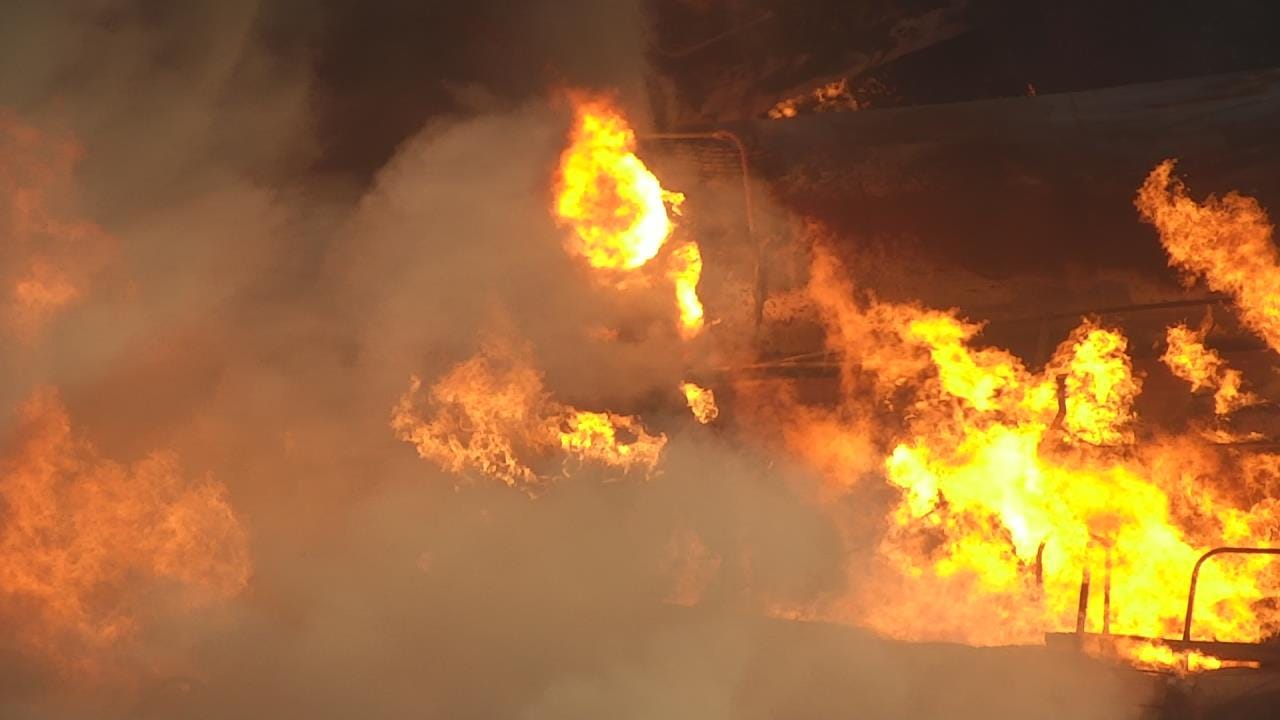An American disaster; hazardous chemical accidents are happening every other day
Why some families keep a getaway bag ready
An oil pipeline ruptures in Kansas, contaminating pastureland where cattle graze and waterways that support precious species. An explosion at a biodiesel plant in Iowa injures 10 people and forces the evacuation of many others. And a train traveling through East Palestine, Ohio derails, sending toxins into the air, water and soil.
Some of these accidents make the news, others do not. But after the train derailment in Ohio, I wanted to know: How often do these “accidents” happen? The answer is- far too often.
An analysis of a combination of data collected by the Environmental Protection Agency (EPA) and by nonprofit groups that track chemical accidents in the US shows that accidental releases – be they through train derailments, truck crashes, pipeline ruptures or industrial plant leaks and spills – are happening on average, EVERY TWO DAYS.
“These kinds of hidden disasters happen far too frequently,” said Mathy Stanislaus, who served as assistant administrator of the EPA’s Office of Land and Emergency Management during the Obama administration. Stanislaus led programs focused on the cleanup of contaminated hazardous waste sites, chemical plant safety, oil spill prevention, and emergency response.
In the first seven weeks of 2023 alone, there were more than 30 incidents. Since April 2020, there have been more than 470.
The precise total number of hazardous chemical incidents over the last decade is hard to determine because the US has multiple agencies involved in oversight and response. But the EPA told me that over the past 10 years, the agency has “performed an average of 235 emergency response actions per year, including responses to discharges of hazardous chemicals or oil.” The agency said it employs roughly 250 people devoted solely to the EPA’s emergency response and removal program.
See the details in this story in today’s Guardian and The New Lede.
These accidents cause injuries, sometimes deaths, and hundreds of millions of dollars in environmental damage. The EPA estimates total cost from accidents just at plant sites to cost almost $500 million a year.
But the human toll is hard to calculate as people living in communities near industrial plants, pipelines, rail lines, etc… know they are at daily risk.
Eboni Cochran, a mother and volunteer community activist in Louisville, Kentucky, lives with her husband and 16-year-old son near an industrial zone along the Ohio River that locals call “Rubbertown.” The area is home to a cluster of chemical manufacturing facilities, and curious odors and concerns about toxic exposures permeate the neighborhoods near the plants.
Cochran told me she, her husband and her son each have a “get-out-of-dodge” backpack at the ready in case of a chemical accident. They stock the packs with two changes of clothes, protective eyewear, first aid kits and other items they think they may need if forced to flee their home.
“Even in small doses certain toxic chemicals can be dangerous. They can lead to long term chronic illness, they can lead to acute illness, Cochran said. “If there is a big explosion, we’re going to be ready.”






Yes, and------------------------ Fleuro chemicals have been poisoning the world for many years, source usa - americans have been persuaded by big business that every home needs a gun - so 45000 deaths a year - mass shootings - our marine ecology is being devastated by seaweed trawling - american big business - now it appears the usa is slowly waking up - time you in the us took your lives in your own hands instead of letting big business slowly kill you. You need information and determination - many have tried, still are
Found this via a link in an Organic Consumers Association article.
Nice work, got you another (free) subscriber 😉